Scientific and Technological Advancements have transformed the modern world, making life faster, smarter, and more efficient. In the subject Technology, this chapter explores how innovation continues to shape our future. In this chapter, we will learn about the following topics:
- Robotics
- Machine Learning
- Augmented Reality
- Nanotechnology
- RFID
- Quantum Computing
- And more emerging technologies.
Previous year Questions
| Year | Question | Marks |
| 2023 | What are Nanomaterials ? Give a brief account of any two carbon allotropes that arebeing used as Nanomaterial. | 10M |
| 2023 | Write any two differences between Classical Computing and Quantum Computing. | 5M |
| 2021 | Explain the concept of real time-PCR. What is ‘Ct value’ in RT-PCR Test for Covid-19? | 10M |
| 2018 | What is the nano mission and its objectives ? | 5M |
| 2013 | Give an account of the use of information technology in e-governance; e-commerceand international diplomacy. | 20M |
| 2013 | What is the size of nanoparticles ? List any two uses of these. | 5M |
| 2013 | What are Quantum dots ? Write about their applications. | 5M |
Robotics
What is Robotics?
- Robotics is the branch of technology that deals with the design, construction, operation, and application of robots.
- It combines mechanical engineering, electronics, computer science, and artificial intelligence to create machines capable of performing tasks that typically require human intelligence and effort.
What is a Robot?
- A robot is a programmable machine that can perform tasks autonomously or semi-autonomously.
- It may resemble humans (humanoids) or be functional and task-specific (industrial robots or drones).
- Examples: Self-driving cars, drones, robotic arms in factories, or surgical robots.
Asimov’s Laws of Robotics
- In 1942, science fiction writer Isaac Asimov introduced the famous “Three Laws of Robotics” in his short story collection I, Robot.
- These laws serve as a fictional ethical framework for robots:
- First Law: A robot must not harm a human being or allow harm through inaction.
- Second Law: A robot must obey the orders given to it by human beings, except where such orders would conflict with the First Law.
- Third Law: A robot must protect its own existence as long as such protection does not conflict with the First or Second Laws.
- Zeroth Law (Later Addition): A robot must not harm humanity or let humanity be harmed.
(Added later by Asimov to prioritize collective human welfare over individuals.)
Relevance of Asimov’s Laws in Governance
- AI Regulation: Ensuring robots act in ways that benefit society.
- Policy-Making: Designing safeguards to prevent misuse or harm caused by robotics and automation.
- Accountability: Addressing the dilemma of responsibility when robots make independent decisions.
Components of Robots
Robots consist of the following key components:
- Power Source: Provides energy for functioning (e.g., batteries, solar power, electricity).
- Actuators: Convert energy into movement. Types of actuators
- Motors: For rotating wheels or robotic arms.
- Linear actuators: For pushing or pulling
- Hydraulic/Pneumatic actuators: For stronger, heavy-duty movements.
- Sensors: Gather data from the environment.
- Camera (vision sensor): For visual inputs like object detection.
- Proximity sensor: To detect nearby obstacles.
- Gyroscope/Accelerometer: To measure orientation and movement.
- Temperature sensor: For detecting heat.
- Controller: Acts as the brain, processing inputs and sending commands (e.g., microprocessors, CPUs).
- Robot’s control system executes a program (software code) that tells it how to respond to the input received from its sensors.
- Manipulator: The physical part for movement and interaction (e.g., robotic arms, grippers).
- End Effector: The tool or device at the robot’s end for specific tasks (e.g., welding torch, surgical scalpel).
- Locomotion System: Enables mobility (e.g., wheels, tracks, legs).
- Programming and Software: Robots are controlled by software that defines their behavior.
- Feedback Mechanism: Most robots include a feedback system to improve performance. Sensors constantly monitor the environment and the robot’s own actions to ensure it’s functioning as intended.

Future
- Autonomous Robots → Increased independence and intelligence.
- Exoskeletons → Assistive robots in healthcare.
- Ethics & Regulation → Debate on privacy, jobs, and AI autonomy.
Development of Robotics in India
Dabbala Rajagopal, commonly known as Raj Reddy, is widely regarded as the “father of robotics in India” and the “father of Indian AI.”
- An esteemed Indian-American computer scientist, he is also a laureate of the prestigious Turing Award.
1980s: Early Foundations
- TIFR Robot: Developed at the Tata Institute of Fundamental Research in Mumbai, marking India’s entry into robotics.
- Centre for Artificial Intelligence & Robotics: CAIR was established under the DRDO to focus on defense-related robotic systems.
- RASI Formation: The Robotics & Automation Society of India was established to promote robotics and automation technologies.
1990s-2000s: Industrial Integration
- Industrial Robots: Companies like Bharat Heavy Electricals Ltd (BHEL) and Tata Motors were early adopters.
- Global Companies: Entry of international robotics firms such as KUKA and ABB into the Indian market.
- Research Centers: Establishment of dedicated robotics research centers in institutions like IIT Kanpur and IISc Bangalore.
2020s: Industry Growth
- Companies like GreyOrange (warehouse robots) and Omnipresent (drones and robotic solutions) are leading the charge in India.
Government Initiative
- Draft National Strategy on Robotics (2023): It outlines the vision to position India as a global leader in robotics by 2030.
- Robotics is identified as a key sub-sector within the “Make in India 2.0” initiative.
- The Production Linked Incentive (PLI) scheme subsidizes companies that create production capacity in India in robot customer industries like automotive, metal, pharmaceuticals, and food processing.
- Atal Innovation Mission (AIM):
- Partnered with Meta to create Frontier Technology Labs (FTLs) for hands-on learning in AI and robotics.
- NITI Aayog’s strategy, known as “AI for All,” emphasizes the integration of AI and robotics in key sectors such as:
- Agriculture (e.g., robotic drones for precision farming).
- Healthcare (e.g., robotic surgery and prosthetics)
- Education (e.g., AI-driven robotic tutors for personalized learning)
- Smart Cities (e.g., robotic systems for waste management and traffic control).
- Robotics in Space Exploration: ISRO has utilized robotic systems in its space missions:
- Vikram Rover (Chandrayaan-3): A robotic rover used for lunar exploration.
- Future plans include deploying humanoid robots like Vyommitra, an AI-powered robot, for human spaceflights under the Gaganyaan Mission.
- SAMARTH Udyog Bharat 4.0
- Objective: To promote Industry 4.0 technologies.
- Setting up smart factories with robotic automation to increase productivity and reduce human error.
- Skill Building:
- Educational programs like e-Yantra by IIT Bombay and competitions such as the Technoxian World Robotics Championship have further fueled interest and skill development in robotics among students and professionals.
- Initiatives like AICTE’s Introduction of Robotics in Engineering Curriculum will prepare future engineers for careers in robotics.
- Robotics for Good Youth Challenge : The “Robotics for Good Youth Challenge” in India encourages students to develop robotic solutions targeting disaster management.
Robotics Growth in India:
- Market Growth: The robotics market in India is projected to grow by 8.26% annually from 2024 to 2029, reaching a market volume of approximately $664.40 million by 2029.
- India now ranks 10th globally in annual installations of industrial robots, reflecting its growing robotics adoption.
- The operational stock of industrial robots in India doubled in five years, reaching 33,220 units by 2021, with an average annual growth rate of 16% since 2016.
- Robot Density in India vs. China:
- India’s robot density in the automotive sector reached 148 robots per 10,000 employees in 2021.
- In comparison, China’s robot density surged from 131 robots per 10,000 employees in 2010 to 772 robots in 2021.
- Supportive Government Policies:
- The Indian government actively supports the growth of its industrial sector with policies such as the Production Linked Incentive (PLI) scheme, which incentivizes manufacturing capacity creation in robotics-heavy industries like automotive, metal, pharmaceuticals, and food processing.
- Job Creation and Economic Outlook:
- Robotics is expected to create new jobs in India, aligning with the country’s large, young workforce, projected to become the largest working-age population globally by 2027.
- Nearshoring and friendshoring strategies, especially in the wake of recent supply chain disruptions, position India as a strong contender for global manufacturing diversification.
- Future Potential: The growth of robotics in India, fueled by government support and increasing industrial demand, underscores its potential to become a global hub for robotics.
Draft National Strategy on Robotics:
- By: Ministry of Skill Development and Entrepreneurship
- Release Date: 13th October 2023
- Objective: The draft National Strategy on Robotics aims to position India as a global leader in robotics by 2030 to actualize its transformative potential.
Key Focus Areas:
- Manufacturing Sector: Promotes robotics for enhancing productivity and automation.
- Industry 4.0: Integrating AI and robotics for smarter, more efficient systems.
- Cyber-Physical Systems (CPS): AI-driven technologies enabling virtual-physical system interactions.
- Sectoral Impact: Four critical sectors identified:
- Manufacturing
- Agriculture
- Healthcare
- National Security
Strategic Framework:
- National Robotics Mission: A proposed initiative under IndiaAI to oversee the strategy’s implementation.
- Robotics Innovation Unit (RIU): An independent agency to drive robotics innovation, startup growth, research, and ecosystem development in India.
Innovation Pillars:
- Research & Development
- Demonstration & Testing
- Commercialization & Supply Chain Development
- Adoption & Awareness
Goal: Establish India as a global “Robotics Hub” by nurturing domestic robotics capabilities and fostering global leadership in the sector.
Applications of Robotics
Agriculture
1. Planting and Sowing
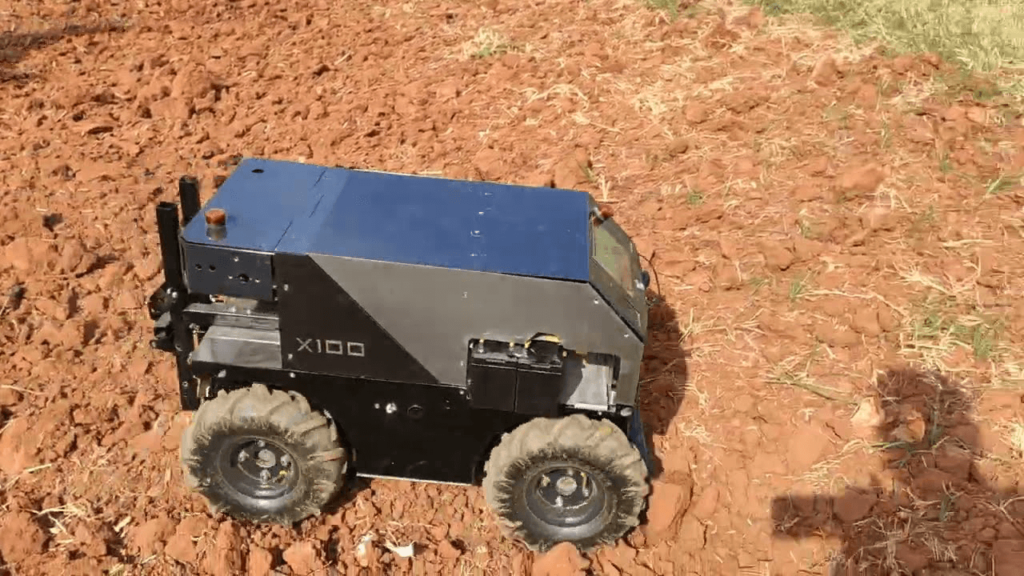
- Example: XMachines X100: This robot plants seeds and performs other tasks like spraying fertilizers.
2. Weeding and Pest Control
- Example: KrishiBot: This robot removes unwanted weeds without harming the crops.
3. Precision Farming
- Role: Robots monitor the soil and crops to ensure the right amount of water, fertilizer, and care.
- KissanAI → generative AI tool for agriculture
- An AI-powered system that provides recommendations on how much water and fertilizer crops need.
- NePPA project at IARI.:
- Variable Rate Fertilizer Applicator (VRFA): A robot designed for fertilizer application in tall crops based on GPS data.
- Drone Technology: Development of indigenous drones for crop health monitoring and a site-specific input management system.
4. Harvesting and Picking
- Example: Autonomous Cotton-Picking Robot
5. Spraying and Fertilizing
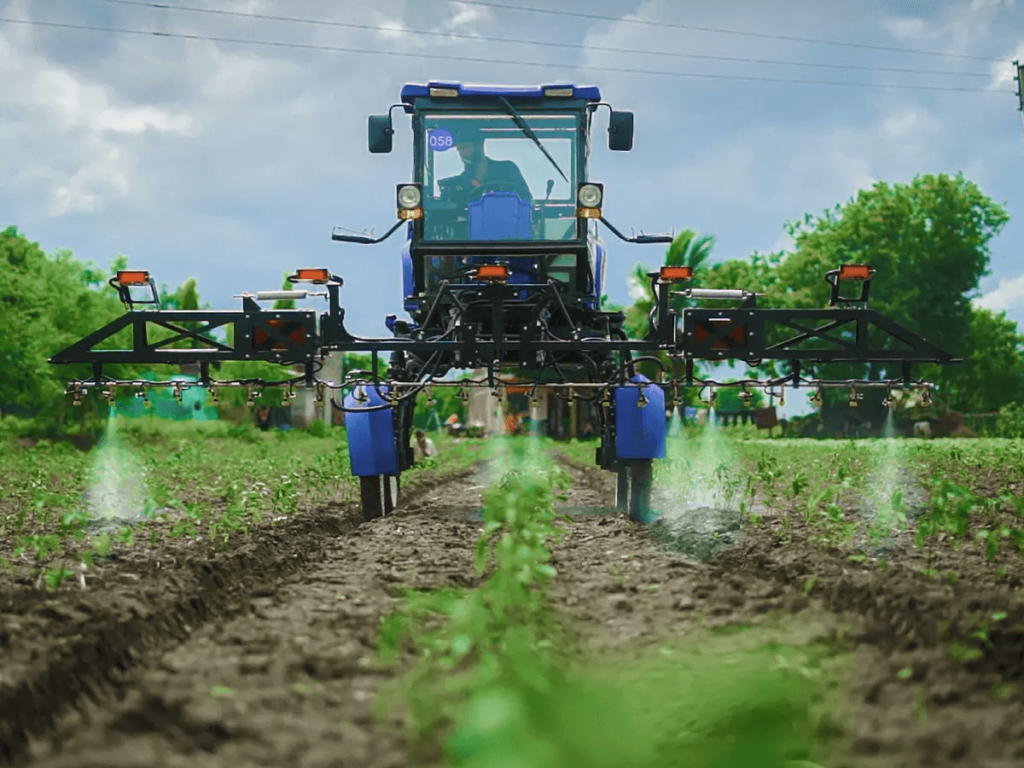
- Example: Niqo Robotics Sprayer: This robot uses cameras to spray pesticides in the right amount.
6. Soil and Crop Monitoring
- Role: Robots check the health of the soil and crops, providing data for better farming decisions.
7. Multi-Tasking Robots
- Role: Some robots can perform several tasks, like sowing, spraying, and harvesting, all in one.
- Farm Sathi: An autonomous vehicle that can plough fields and spray fertilizers.
8. Post-Harvest Management
- Role: Robots sort, grade, and pack crops to ensure they are ready for the market.
Healthcare
1. Surgical Assistance
- Example: Da Vinci Surgical System → Used for minimally invasive surgeries like heart, kidney, and prostate surgeries.
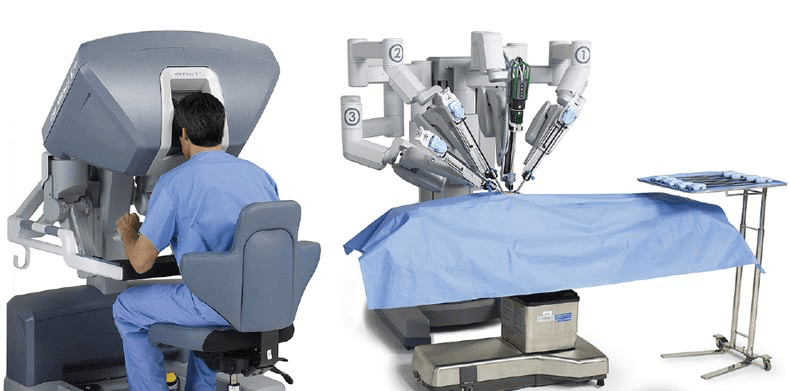
2. Rehabilitation
- Robots help patients recover from injuries or surgeries by improving mobility.
- Example: Lokomat → A robotic system for gait training, assisting patients with walking after spinal injuries or strokes.
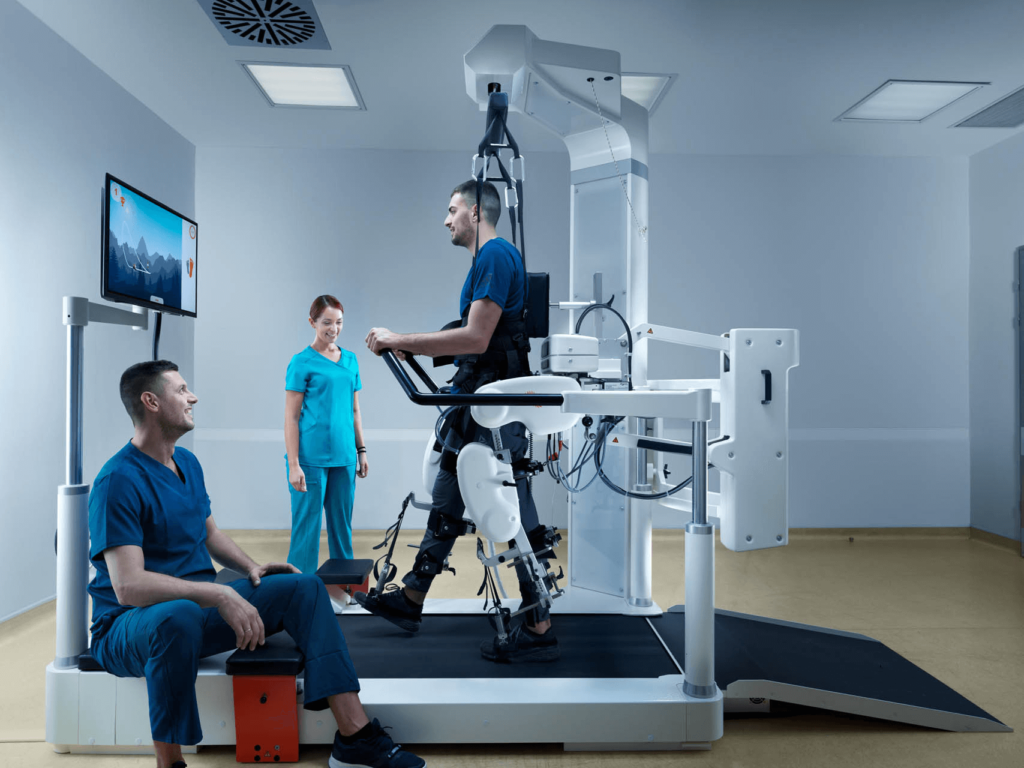
3. Diagnostics and Lab Automation
- Yaskawa Robots → Used in diagnostic labs for handling and processing samples.
4. Telemedicine and Patient Interaction
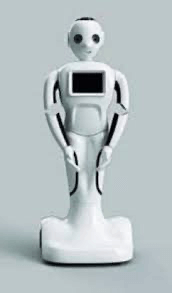
- Robots enable remote communication between patients and doctors, reducing physical contact.
- Mitra → A humanoid robot used during the COVID-19 pandemic for doctor-patient interactions.
5. Patient Assistance
- Robotic wheelchairs with AI navigation for patient mobility.
6. Drug Delivery and Disinfection
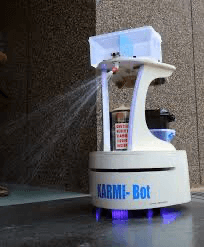
- KARMI-Bot: Used during the COVID-19 pandemic to deliver food and medical supplies to isolation wards.
- Medbot: Used for medicine delivery and hospital disinfection
7. Emergency Response
- Example: Robotic Ambulances (concept): Designed to handle emergencies efficiently.
8. Nanorobots
- Bio-NEMS Devices → Miniature devices for drug delivery and health monitoring.
Defense
Common Types of Military Robots
- Transportation Robots: Unmanned Ground Vehicles (UGVs) and Unmanned Aerial Vehicles (UAVs) can be utilized for logistics operations.
- Search and Rescue Robots
- Surveillance and Reconnaissance Robots
- Defense Robots: Engage in combat tasks, carry heavy equipment, and rescue soldiers.
- Armed Robots: Equipped with weapons to eliminate threats.
- Examples: Systems like SWORDS (Special Weapons Observation Reconnaissance Detection System) can operate autonomously in combat scenarios.
- 6. Firefighting Robots: Examples- TEC800.
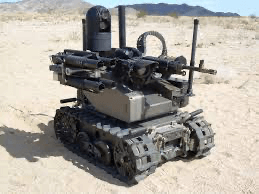
Indian Robots in Defense Sector
- Robotic Buddy
- Versatile battlefield robot
- Detects humans, measures distances
- Lifts up to 15 kg, retrieves unexploded ordnance
- Autonomous Weaponized Boat Swarms
- Designed for maritime security operations
- Equipped with weaponry and sensors
- Executes patrols and coastal surveillance
- RoboSen
- Developed by DRDO for surveillance and reconnaissance
- Includes mini UGVs and wall-climbing robots
- Enhances logistical support in military operations
- Multi-Utility Legged Equipment (MULE)
- Operates in extreme temperatures (-40 to +55°C)
- Climbs stairs and steep hills
- Carries payload of 15 kg, enhances surveillance
- ROV Daksh
- Remotely operated vehicle for bomb disposal
- Uses X-ray vision to identify hazards
- Diffuses explosives with water jets
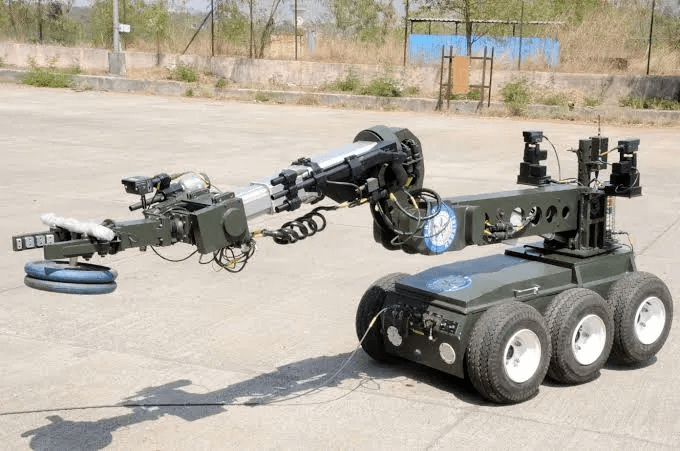
Industry
- Material Handling
- Kiva Systems (now Amazon Robotics) – Used in Amazon warehouses to automate the picking and packing process by transporting shelves of products to human workers.
- Welding
- FANUC Arc Mate Series – Widely used in automotive manufacturing for precise and efficient welding tasks.
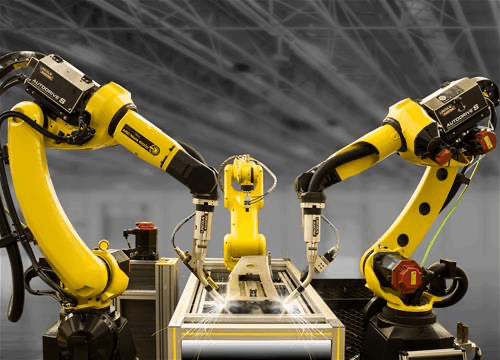
- Assembly
- Indigenously designed Collaborative robots (cobots) by Systemantics for automation in various sectors like automotive, e-commerce, and electronics industries.
- Inspection and Quality Control
- Sastra Robotics’ Testing Arms➔ Robotic arms designed for electronic device testing ➔ Reduces testing time from 256 days to just 15 days, improving efficiency in quality control processes.
- Logistics and Transportation
- GreyOrange Robots ➔ Automated logistics robots used in warehouses for sorting and transporting goods.➔ Enhance operational efficiency and accuracy in inventory management.

- Agriculture
- Niqo Robotics➔ Tiny robots that target and spray pesticides with precision.➔ Reduces pesticide use by almost 60% while improving crop management.
- Cleaning and Maintenance
- Bandicoot by Genrobotics➔ Robot designed to clean sewers, addressing the issue of manual scavenging ➔ Provides a safe alternative for hazardous cleaning tasks.
- Underwater Robotics
- Example: Gridbots Technologies’ Underwater Robot➔ Initially developed for tank cleaning, now used across various industries.
Disaster Management
- Borewell Rescue Robots
- Specially designed to save children trapped in borewells.
- Equipped with cameras and robotic arms for safe rescues.
- Drones during Cyclone Amphan (West Bengal)
- Deployed for real-time damage assessment and resource allocation.
- Aerial Robotics in Kerala Floods
- Used for mapping flood-hit areas and delivering relief supplies.
- Snake Robots
- Can navigate through narrow gaps in collapsed buildings to locate survivors.
- Robots for Chemical Spills
- Semi-autonomous robots handle chemical and oil spills in industrial disaster scenarios.
- All-terrain firefighter robot
- Equipped with water cannons, this robot is designed to combat fires in challenging terrains.
Smart Cities and Public Services
- Robotics will play a major role in India’s Smart Cities Mission, with applications in:
- Waste Management: Robotic systems for segregating and recycling waste
- Bandicoot (By Genrobotics): This AI-powered robot is designed for cleaning manholes and maintaining sanitation in urban areas. It is the first of its kind globally.
- Surveillance: Autonomous drones and robots for public safety.
- Transportation: Autonomous vehicles for urban transport solutions.
- Waste Management: Robotic systems for segregating and recycling waste
Miscellenous
Sophia
- Developer: Hanson Robotics
- Sophia continues to be a prominent figure in robotics. Known for her conversational abilities and emotional recognition, she serves as an ambassador for AI and robotics.
EyeROV TUNA
- This is India’s first underwater remotely operated vehicle (ROV) designed for sub-aquatic inspections. It can operate at depths of up to 100 meters and is used for inspecting dams, bridges, and oil pipelines.
Mini Mitra (Invento Robotics)
- A companion robot for senior citizens that can detect falls, converse, and provide notifications to family members.
Miko
- IoT companion devices for children that use AI for interactive learning and emotional support.
Vyomitra:
- Vyomitra is a humanoid robot developed by the Indian Space Research Organisation (ISRO) for the Gaganyaan mission, India’s first human spaceflight program. The name “Vyomitra” is derived from Sanskrit, meaning “Space Friend.”
Challenges and Opportunities of Robots
Reasons for recent robots Surge :
- Robots are becoming cheaper than humans.
- Robots are rapidly becoming more capable : Innovations in AI, machine learning, and computing power.
- Demand for manufactured goods is rising, and countries like China are investing heavily in robots to position themselves as the global manufacturing leader.
Opportunities
- Innovation and Creativity : Robots open possibilities for new industries and job roles.
- Upskilling Workforce : Demand for new skills will create opportunities for education and training programs.
- Robotics Dividend : Increased robot deployment benefits the wider economy through enhanced productivity.
- Data: A 1% increase in robots per worker boosts output per worker by 0.1%.
- Streamlining Processes : Robots are now used beyond manufacturing, in areas like logistics, driving, and inventory management.
Challenges of Robots in India
- Limited Skilled Workforce: As of 2021, the operational stock of industrial robots reached over 33,220 units, but the shortage of trained professionals in robotics remains a barrier.
- High Capital Costs: Robotics systems are expensive. India’s robot density is only 3 robots per 10,000 employees, far lower than China (505) and South Korea (2,589).
- Dependence on Imports: The sector relies heavily on imported components, increasing costs and complicating supply chains.
- Limited R&D Investment: Many Indian projects replicate existing technologies rather than innovate.
- Insufficient Government Support: Although initiatives like “Make in India” exist, overall governmental support for robotics is lacking compared to other Asian countries.
- Infrastructure Issues: Inconsistent power supply and limited internet connectivity in rural areas hinder the effective deployment of robots.
- Reshaping Labor Market: Need for upskilling and reskilling to adapt to new roles and technologies. The impact of automation on traditional jobs.
- Economic Inequality: Rising robotics adoption risks job polarization and regional economic divides. High economic growth in some areas, while fear of unemployment in others.
Ethical Considerations of Robots
- Cultural Resistance: There is apprehension about adopting robots due to fears of job displacement and a preference for human labor.
- Economic Divide: Low-income regions lose twice as many manufacturing jobs due to robots compared to higher-income regions (World Bank report). The benefits of automation mainly accrue to large industries, while small enterprises are affected.
- Environmental Impact: Improper disposal of robotic components can contribute to India’s growing e-waste problem.
- Privacy Issues: Robots collect data for efficiency, raising privacy concerns.
- Regulation and Accountability Challenges: Determining responsibility for autonomous robots’ actions is complex, especially in critical sectors like healthcare.
- Algorithmic Bias: AI-driven robots can perpetuate biases from their training data.
FAQ (Previous year questions)
Real Time – Polymerase Chain Reaction (RT-PCR)
Real-Time PCR (RT-PCR) is a molecular diagnostic tool widely used to detect genetic material, especially for identifying RNA viruses like SARS-CoV-2.
Concept of Real-Time PCR:
RT-PCR combines reverse transcription (RT) and polymerase chain reaction (PCR) to detect RNA viruses.
In RT-PCR, the RNA is first converted into complementary DNA (cDNA) using reverse transcriptase.
PCR then amplifies specific regions of the cDNA using thermal cycling.
Real-time PCR tracks the amplification in real-time using fluorescent dyes or probes.
The key output of RT-PCR is the Cycle threshold (Ct) value.
The process is highly sensitive, allowing detection of minute quantities of viral genetic material.
Ct Value in RT-PCR Test:
Ct (Cycle threshold) value refers to the number of cycles required for the fluorescent signal to cross the detection threshold (i.e., become detectable).
Ct values help in diagnosis, isolation decisions, and monitoring the spread of infection.
Lower Ct value → higher viral load (more viral RNA present in the sample).
Higher Ct value → lower viral load or early/late infection stage.
Ct value is crucial for assessing infectivity, but not an absolute measure of disease severity.
Generally, Ct values below 35 are considered positive in most protocols.
RT-PCR with Ct value analysis remains a gold standard for accurate and early detection of COVID-19, aiding timely isolation and treatment.
Information Technology (IT) means the use of hardware, software, services, and supporting infrastructure to manage and deliver information using voice, data, and video. It has emerged as a transformative tool for governance, business, and diplomacy in the digital age. It enhances transparency, efficiency, accessibility, and global reach.
Use of IT in e-Governance:
Digital Service Delivery: Platforms like Digital India, e-Gov, and UMANG App provide services like Aadhaar, PAN, passport, and welfare schemes online.
Transparency & Accountability: Platforms like RTI Online, MyGov, and CPGRAMS empower citizens and ensure government accountability. Digital trails reduce corruption and improve transparency in administration.
Administrative Efficiency: Systems like e-Office, SPARROW (for civil service appraisals), and e-Courts reduce paperwork and speed up processes.
Financial Inclusion: Public Financial Management System (PFMS) and Direct Benefit Transfer (DBT) ensure timely and leak-proof welfare distribution.
Digital Inclusion/Rural Connectivity: Common Service Centres (CSCs) enable last-mile digital service delivery in rural India.
Smart Governance: Use of GIS, data analytics, and AI in urban planning, disaster management, and traffic control under Smart Cities Mission. Real-time grievance redressal through platforms like e-Samadhan.
Use of IT in e-Commerce:
Online Marketplaces: Platforms like Amazon, Flipkart, and GeM (Government e-Marketplace) have revolutionized retail and public procurement. Facilitates access to a wide customer base, especially for small and medium enterprises (SMEs).
Payment Solutions: Digital wallets (Paytm, PhonePe), UPI, and BHIM enable secure and instant transactions. Promotes a cashless economy and ensures faster transactions.
Customer Engagement: Use of AI and big data in personalized recommendations, chatbots, and targeted marketing.
Logistics & Supply Chain: Use of IoT, blockchain, and big data enhances real-time tracking, reduces logistics costs, and prevents fraud.
Start-up Ecosystem: IT has enabled a boom in tech-based start-ups like Zomato, Ola, and Byju’s through e-commerce platforms.
Use of IT in International Diplomacy:
Virtual Diplomacy: Video conferencing (Zoom, Webex, and Microsoft Teams), virtual summits (e.g., G20, BRICS), and digital signatures have streamlined international negotiations.
Cyber Diplomacy: Nations engage on cybersecurity, internet governance, and digital sovereignty at forums like UN IGF and ICANN.
Public Diplomacy: Governments use social media and digital platforms (Twitter diplomacy) to shape global opinion and outreach.
Consular Services: E-visa, passport services, and digital grievance redressal strengthen citizen services abroad.
Crisis Management: IT tools assist in real-time coordination during emergencies like the COVID-19 pandemic (e.g., Vande Bharat Mission updates, travel advisories).
Information technology is a key enabler of inclusive governance, efficient commerce, and strategic diplomacy. Its integration ensures a more transparent, responsive, and globally connected India, aligned with the vision of a Digital India.
